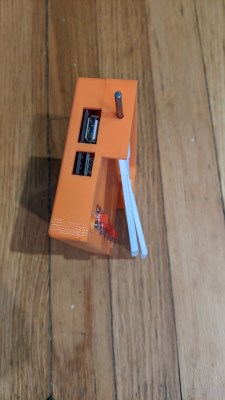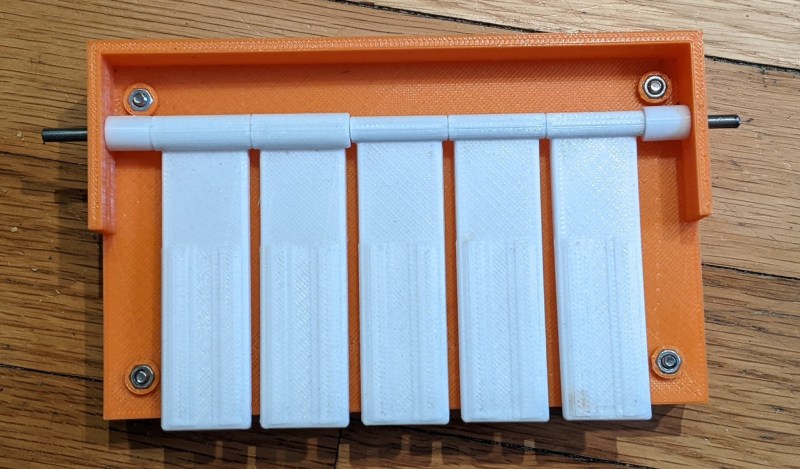Douglas Engelbart’s 1968 “Mother of all Demos” introduced the world to a whole range of technologies we take for granted today, the most prominent being his great invention, the computer mouse. However, the MOAD also showcased things like cut-and-paste text editing, a point-and-click interface, video conferencing, and even online collaboration à la Google Docs. One of the innovations shown that for some reason didn’t stand the test of time was the chorded keyboard: an input device with five keys that can be pressed simultaneously in different combinations, the same way you would play chords on a piano.

While a handful of attempts have been made over the years to bring new life to the “chorder”, it failed to achieve mainstream appeal and remains a curiosity to this day. That makes it a natural fit for the Odd Inputs and Peculiar Peripherals contest, as we can see in [Russ Nelson]’s submission called the Engelbart Keyset, which aims to create a modern 3D printed chorder that works exactly as Engelbart intended it.
It’s important to note that the chorded keyboard was not meant to be just an additional set of five keys. Instead, Engelbart showed the clever interplay between the chorder and the mouse: the five keys under his left hand and the three mouse buttons under his right could be combined to create a full 8-bit input device. [Russ]’s device therefore includes a USB host interface to connect a USB mouse as well as a USB client interface that presents itself as a combination mouse/keyboard device to the PC.
The brains of the device are formed by a Teensy 4.1, which reads out the codes sent by the mouse as well as the five keys on top. If one or more of those keys are pressed together with a mouse button, then a keyboard code is generated corresponding to Engelbart’s original keycode mapping. We’re wondering how practical this whole setup would be in real life; it looks like something you’d have to try hands-on to find out. Fortunately, all the schematics, code and STL files are available on the project page, so with just a bit of work you can have your own MOAD setup on your desk today.
We’ve featured a couple of chorded keyboards on these pages; the Pico Chord, the Chordie and the BAT spring to mind. If you’re looking for a recap of Engelbart’s stunning presentation, check out our piece on the Mother of all Demos, 50 years on.

















Neat, I have only browsed through MOAD so I didn’t know how the chorded keyboard worked, now I know how integrated it all was. Very inspiring.
I too have been working on a USB Engelbart chorded keyset for the past couple years as an on-again off-again project and partial kit offering. This motivates me to get on and finish it!
Props to Russ’ version. Here’s a photo of mine. It’s as accurate in shape, dimensions and paddle tactility to the original Alto keyset (second production version) as I could make it. A few minor tweaks to the top cover shell height still needed.
http://www.surfacezero.com/g503/uploads/612/Xerox_Alto_Chorded_Keyset_replica_SteveM.jpg
Do you have the adjustable micro switches near the pivot point, like the original? Then I’ll buy one.
I do indeed, as per the original, and likewise adjusted from underneath I had some help from people lucky enough to own/operate Altos. I’ll get to finishing it, will then post about it on vcfed/cctalk and so on.
Looks nice! I wanted the full range of movement that comes from a mechanical key module. They’re mounted underneath so that sets them up off the desk a bit. I may re-do it using magnets and analog hall effect sensors like https://github.com/riskable ‘s key. That would let it be much lower profile.
check out plover / open stenography for chorded text entry: http://www.openstenoproject.org/